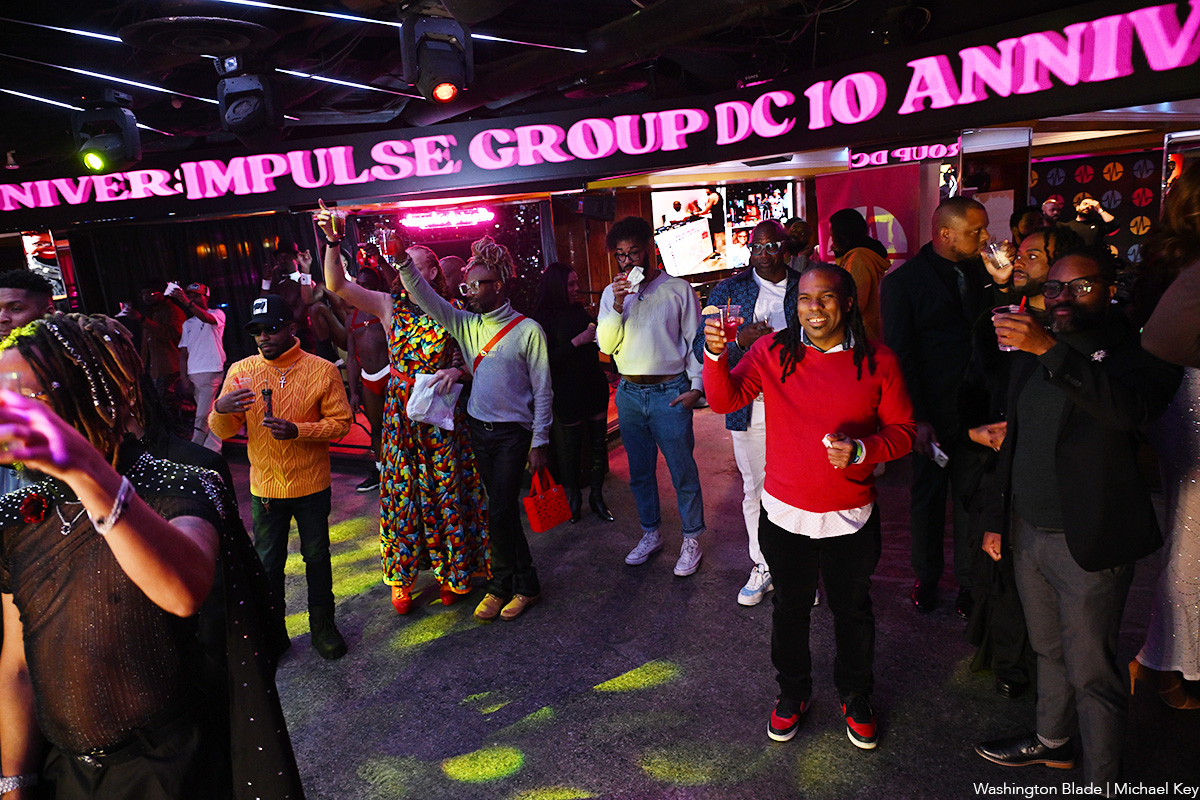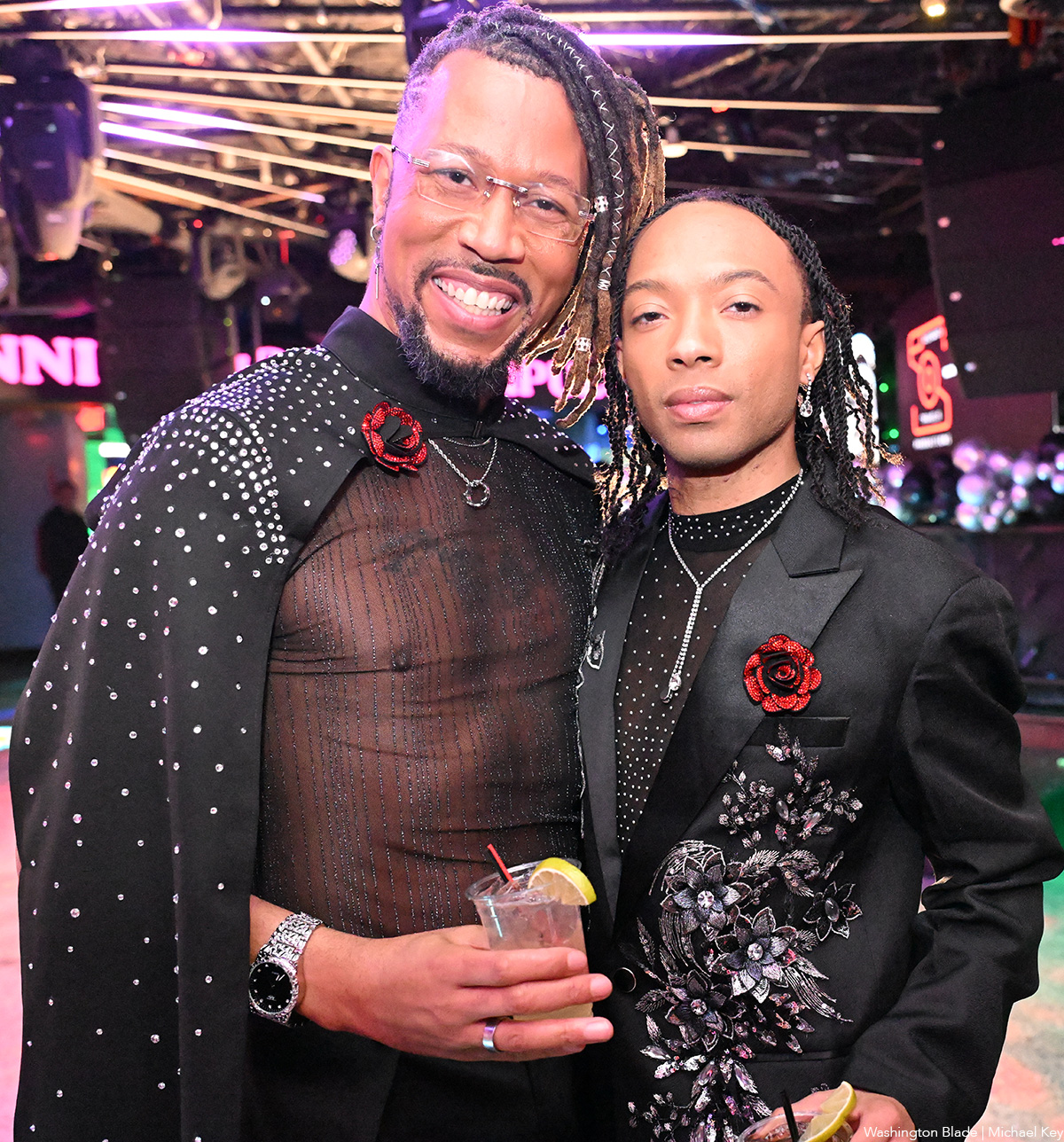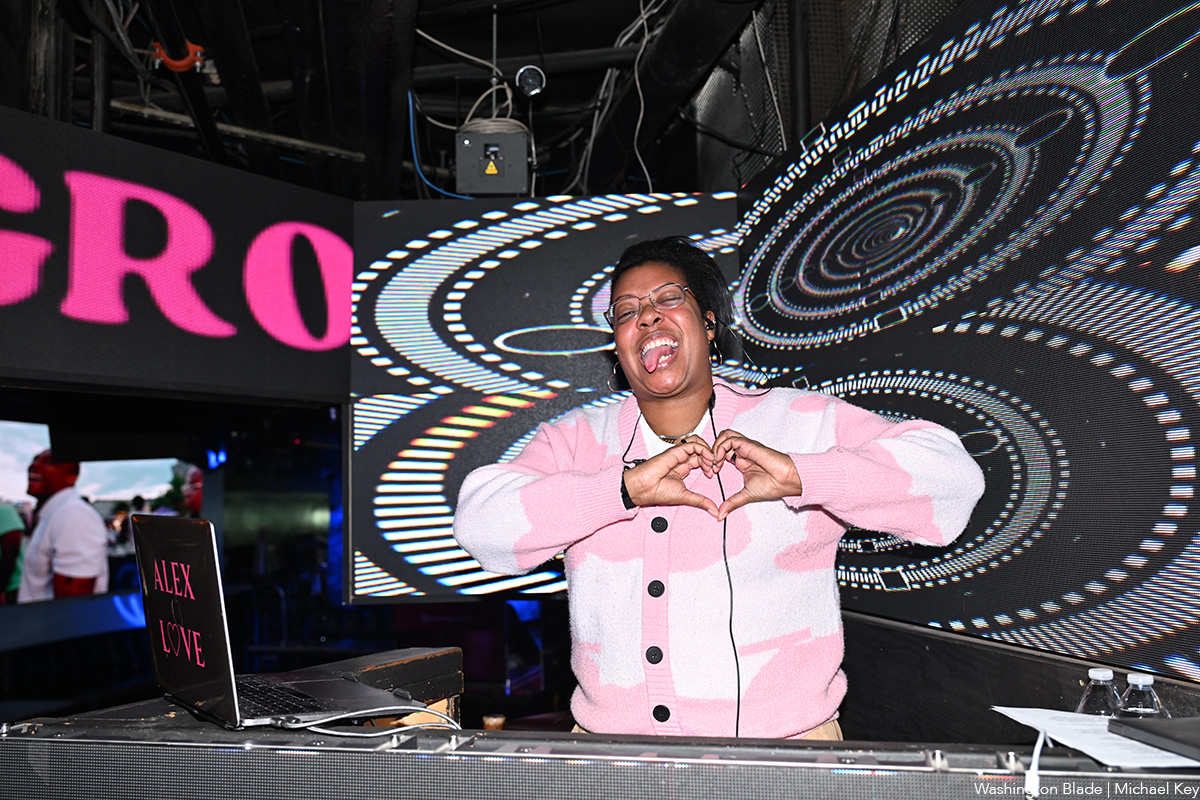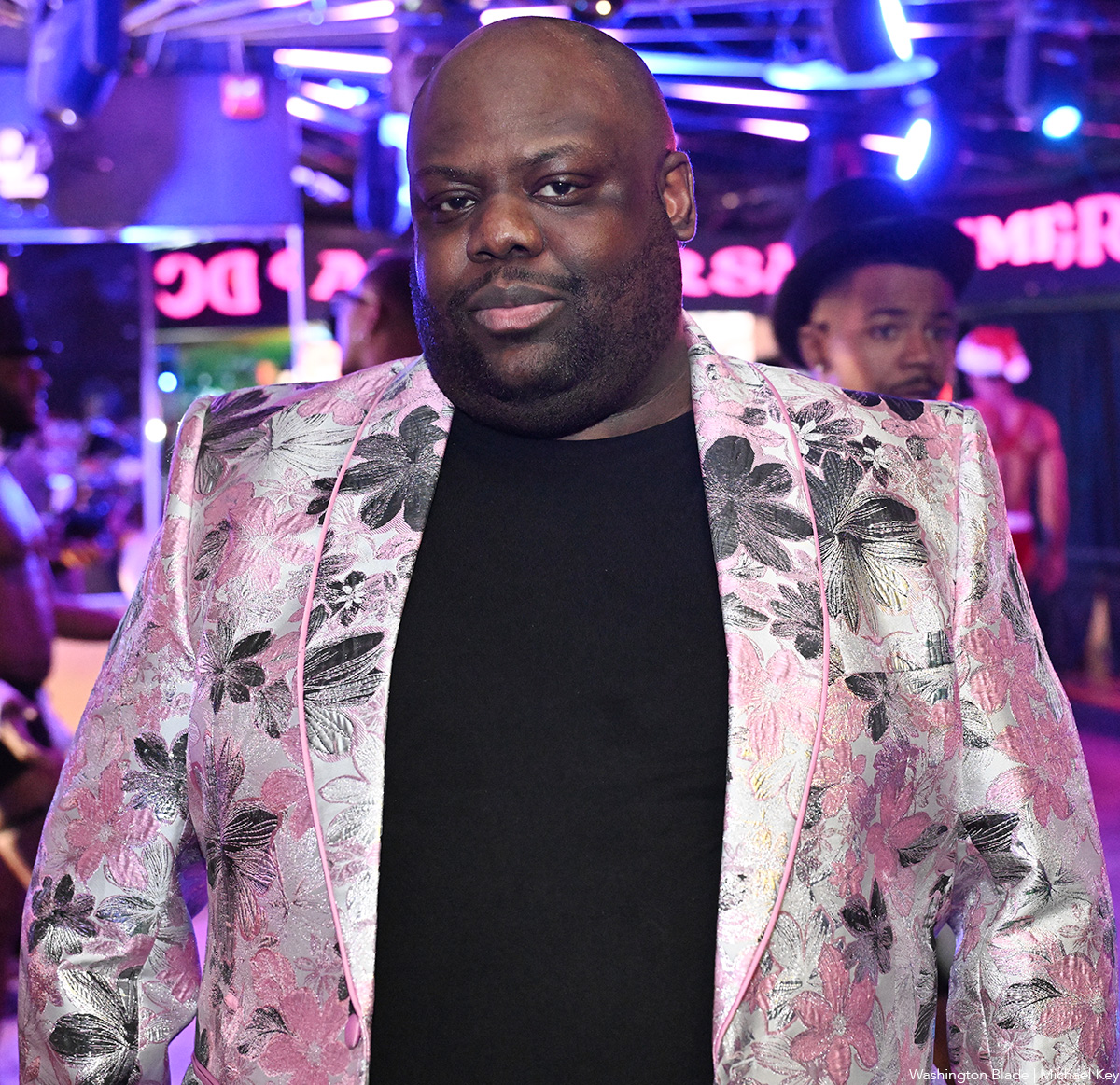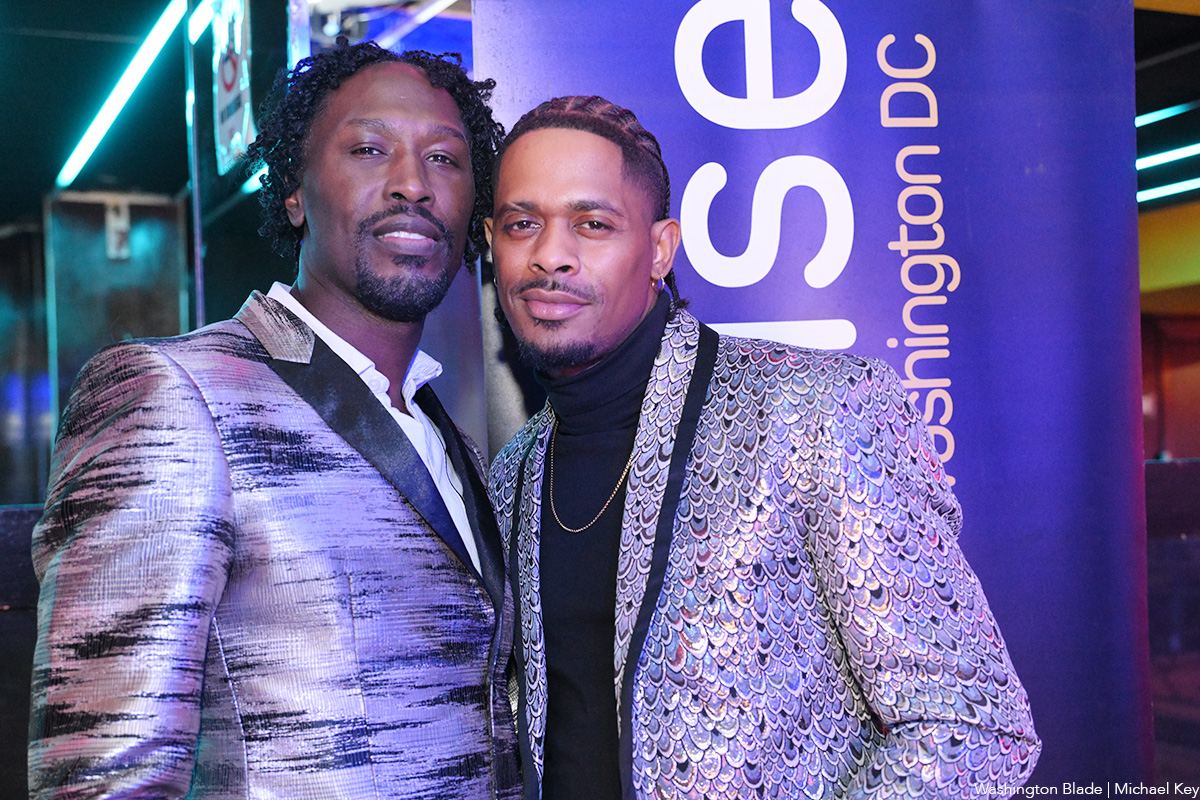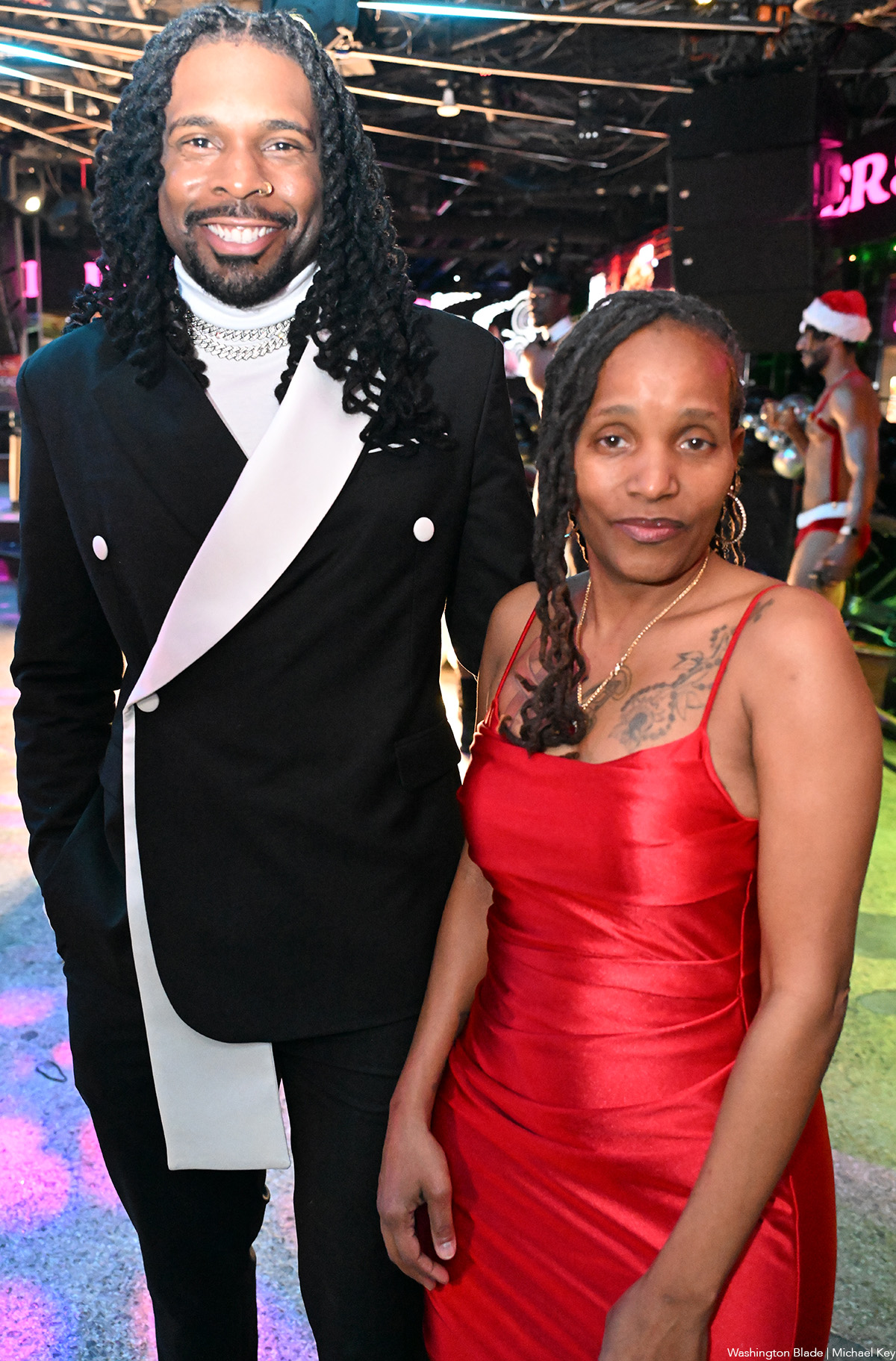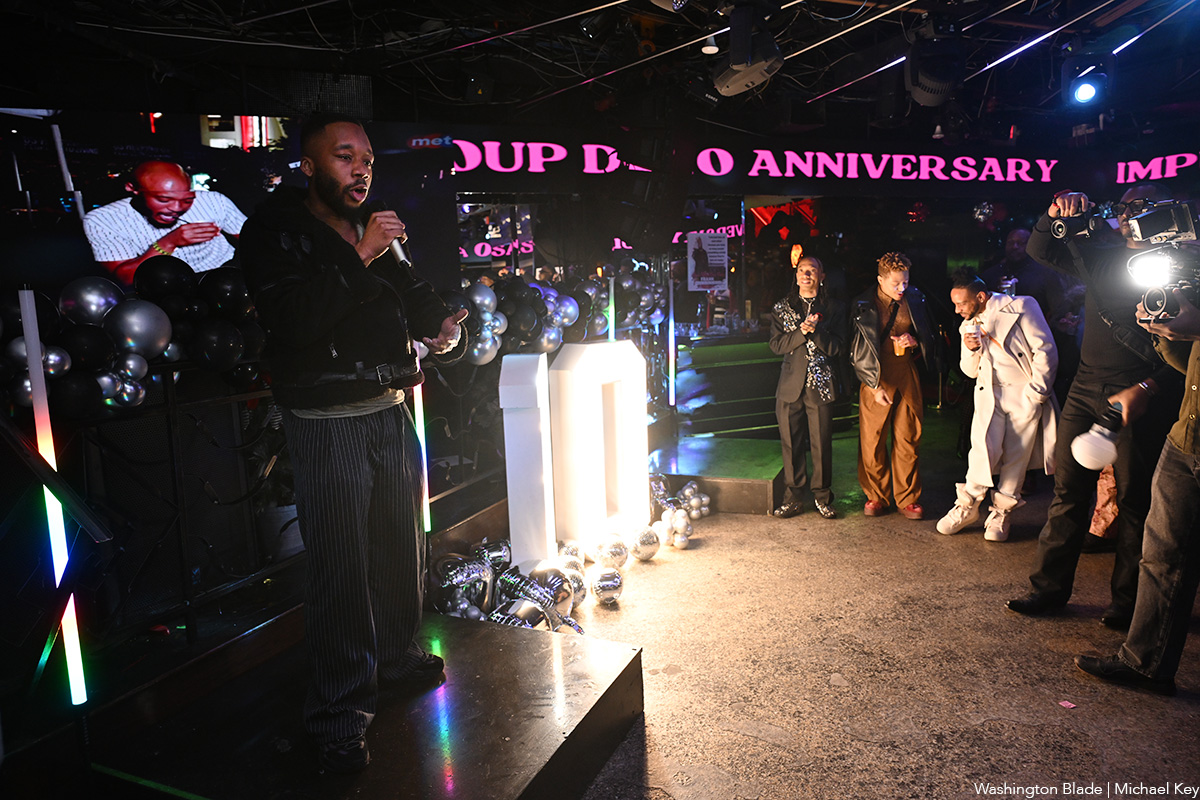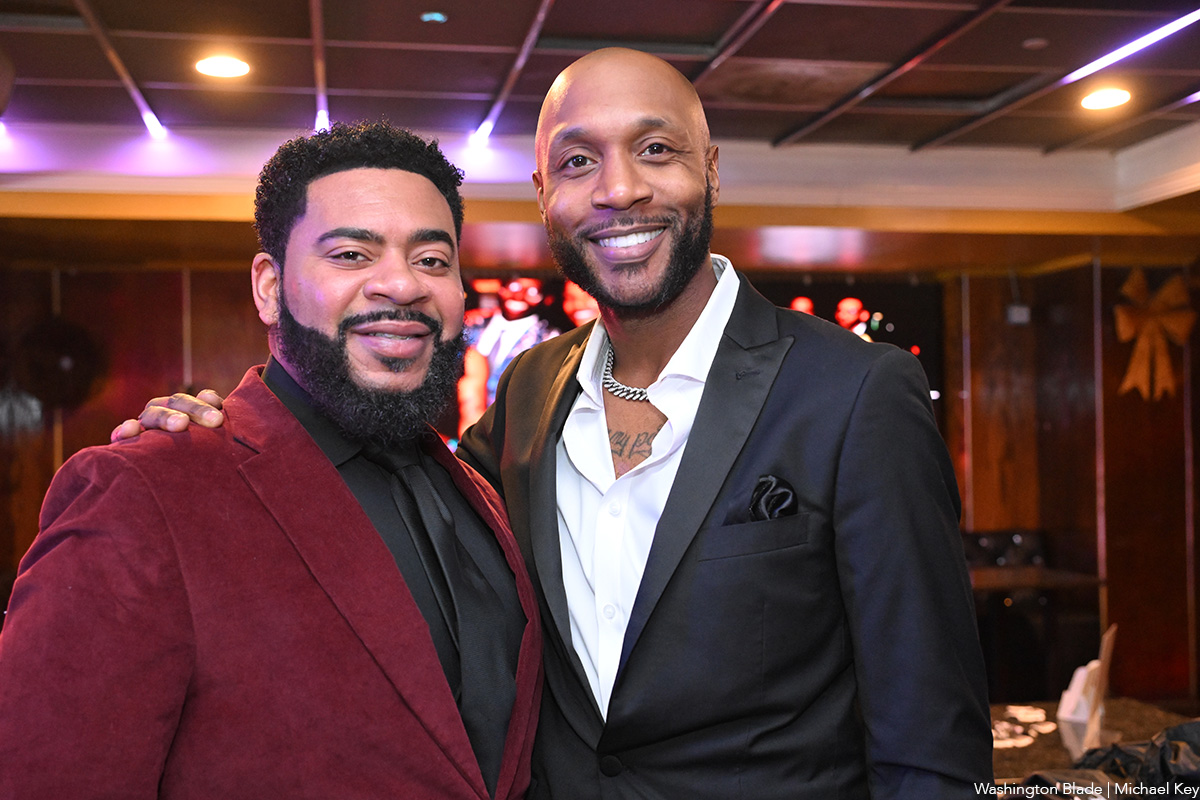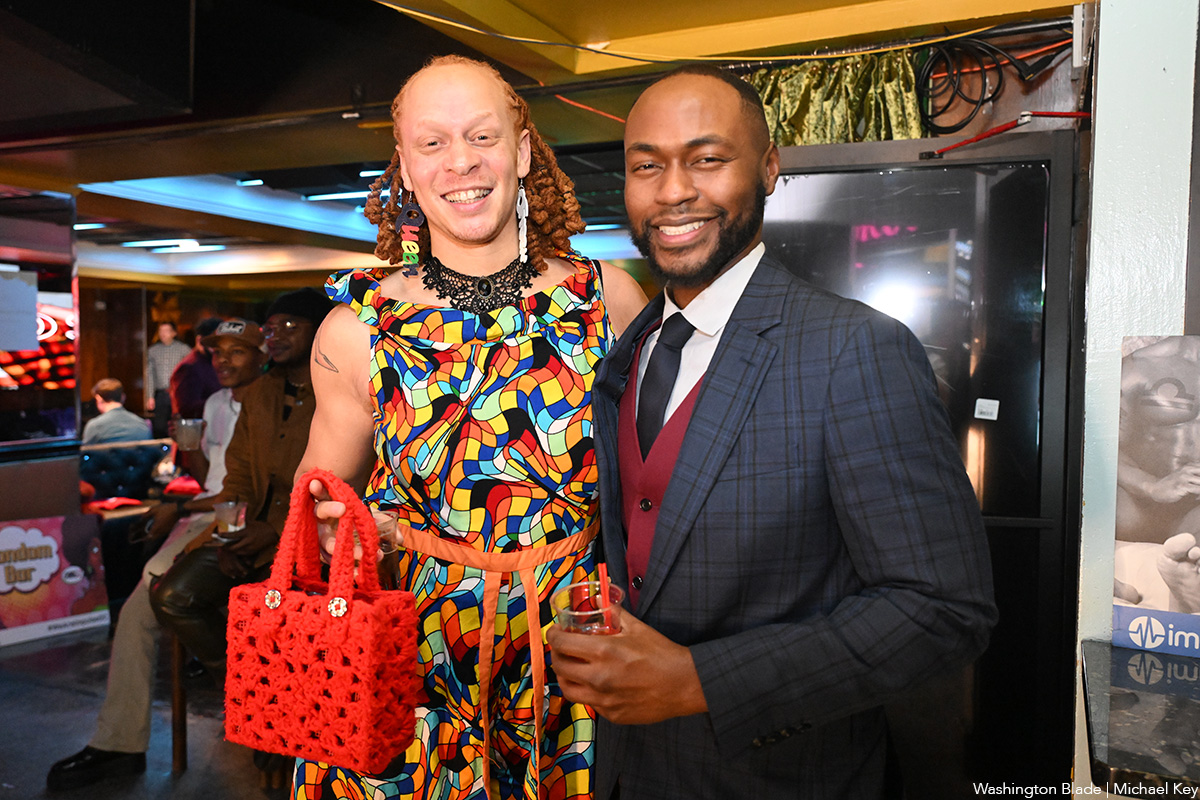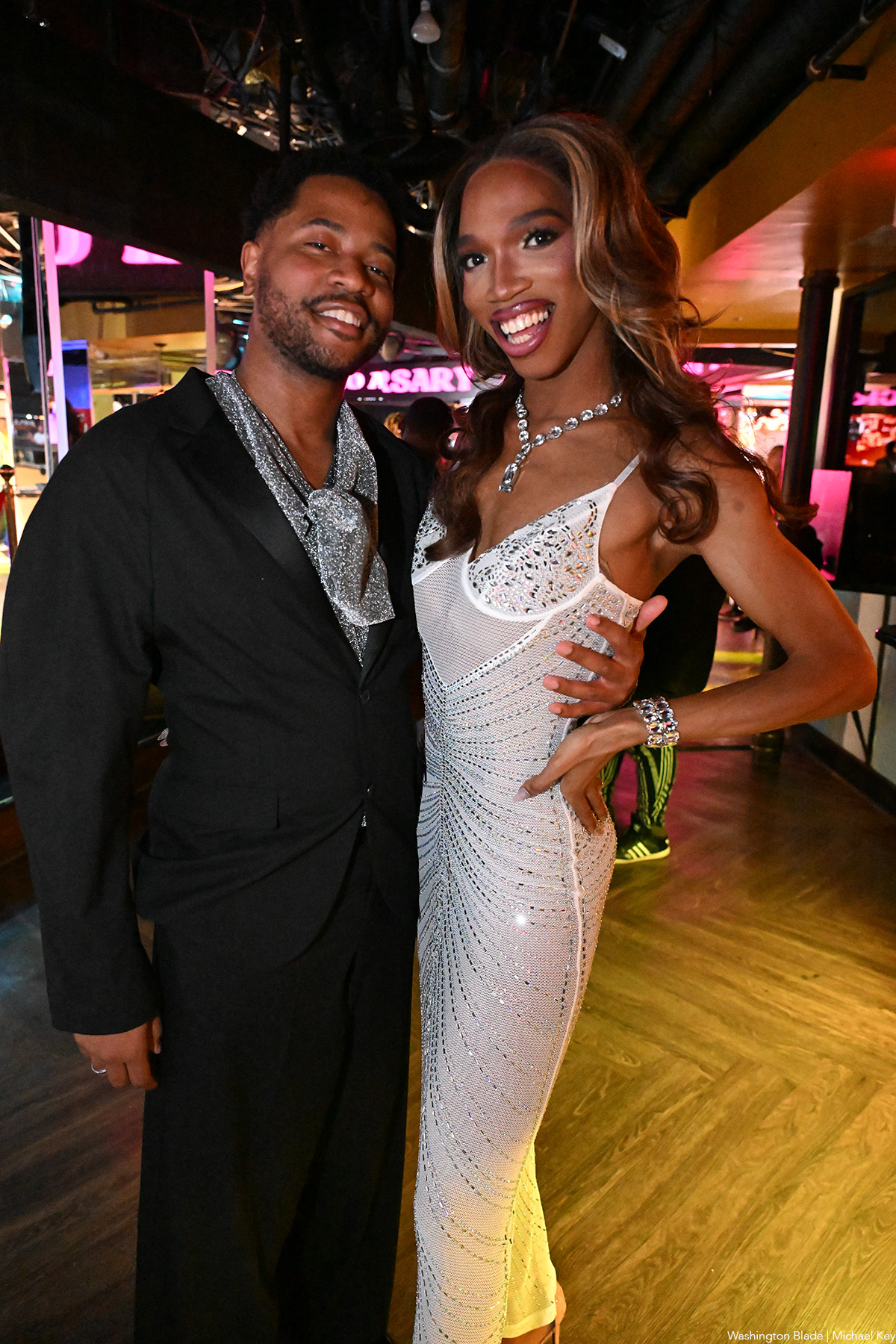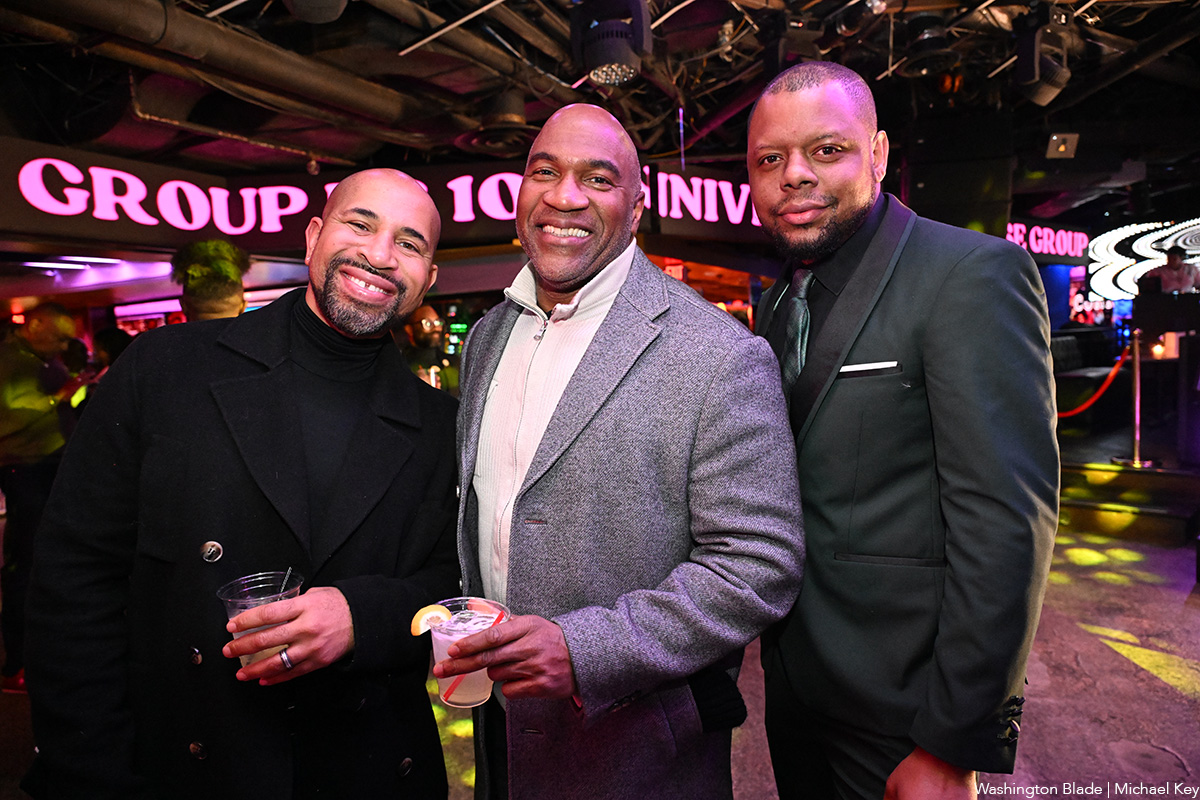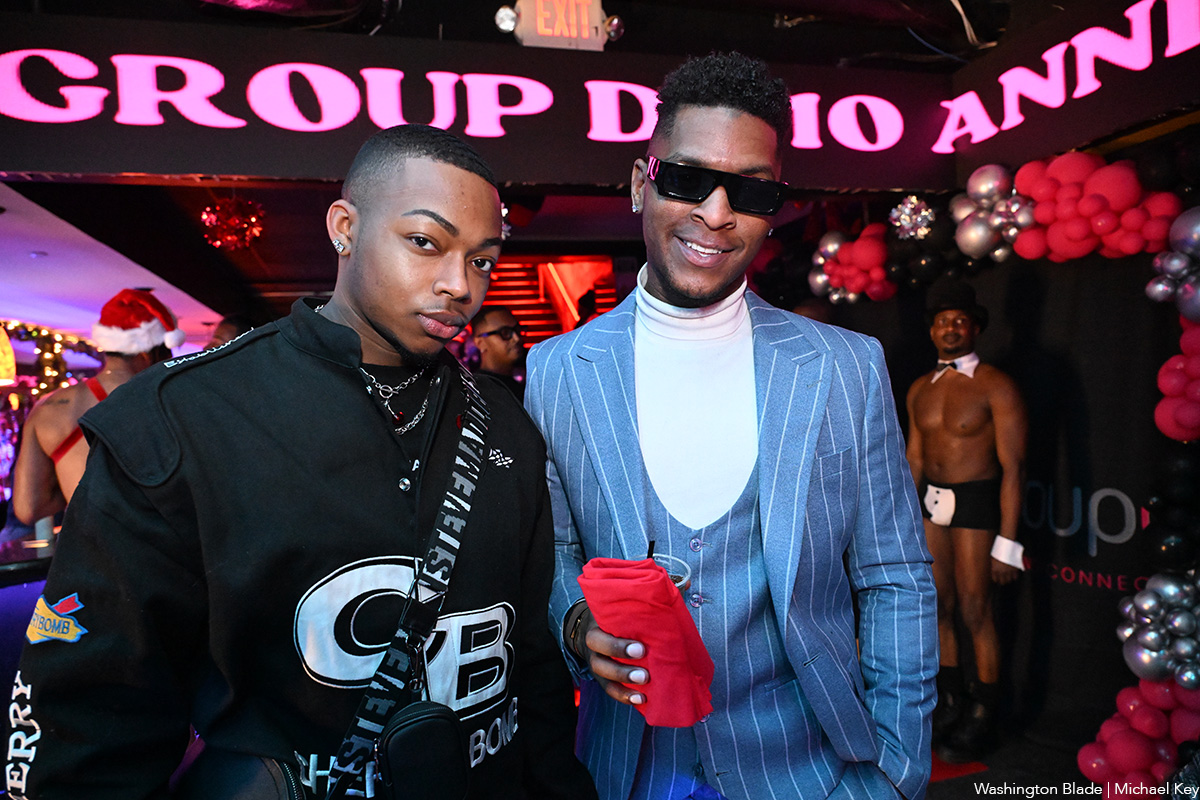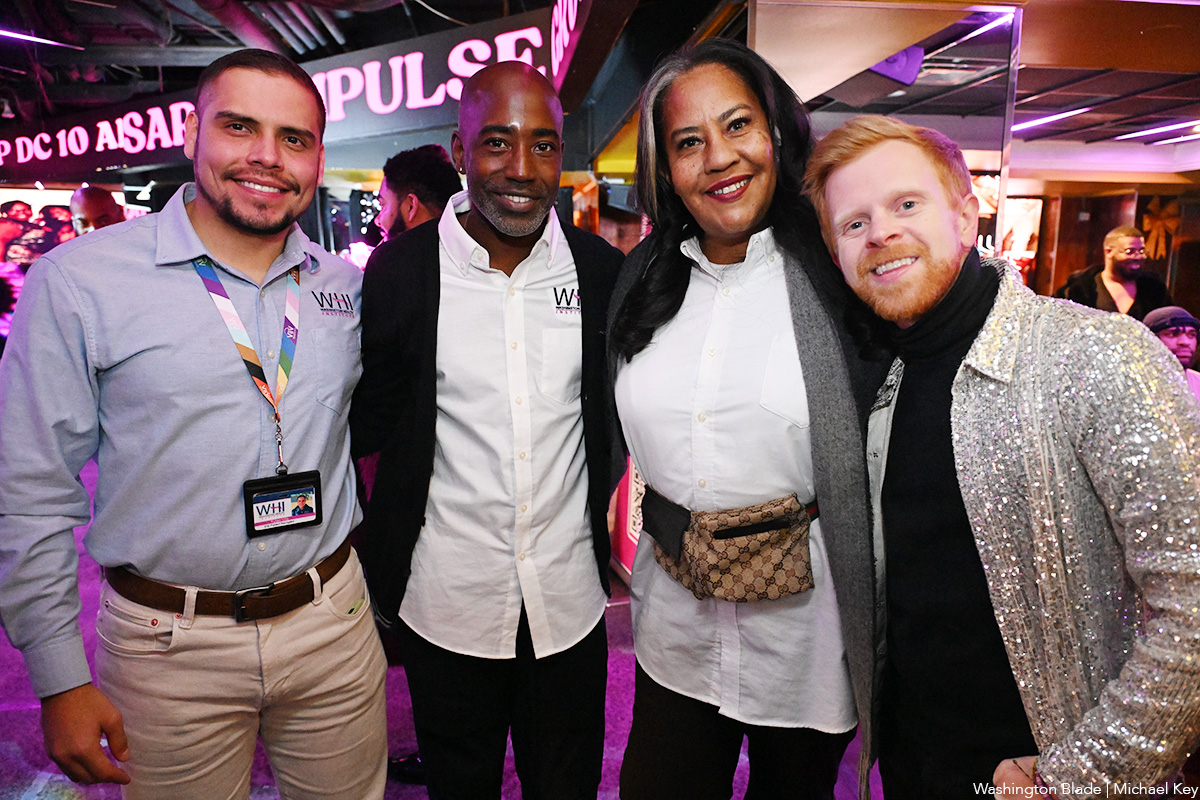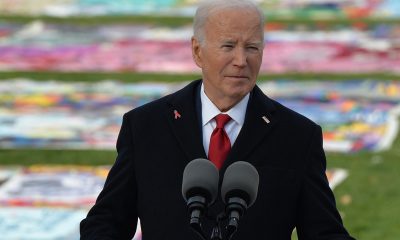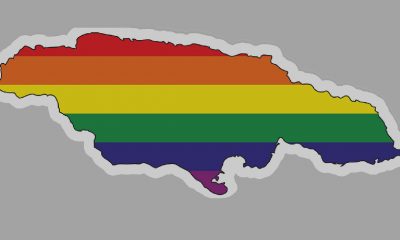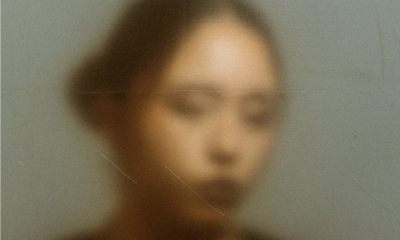Arts & Entertainment
A non-binary Cuban artist is born again in Spain
Nonardo Perea suffered persecution in his homeland
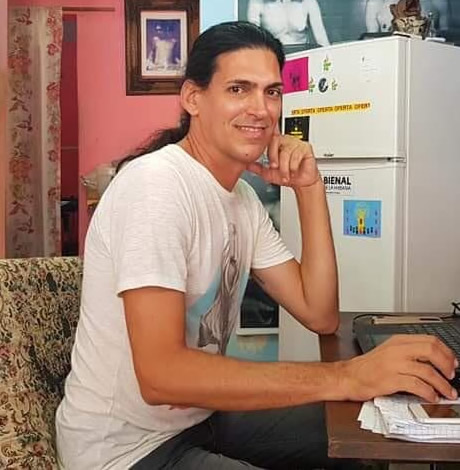
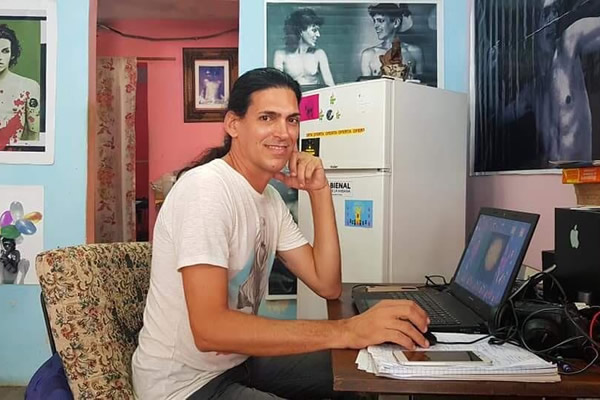
Nonardo Perea lives in Michel’s body. He uses it at will to be vulgar, angelic or diabolical, male or female. Nonardo can be whatever he wants. Michel, shy and withdrawn, hides behinds that alter ego that lends him his face and hands to show the world his claims as an artist.
Nonardo is an invention that comes to life in photographs, video art, performances, stories, installations, journalistic articles, ceramics, and whatever other format is possible, since Nonardo long ago lost any limits. His mind lost that ability as he reinvented himself as an empirical artist, as no one ever gave him the opportunity to attend art school.
He has been greatly misunderstood, mainly because his pieces overflowed with eroticism and Cuba is still too prudish to appreciate his queer art and his other works the regime has labeled as “politically incorrect.” Michel and Nonardo were discriminated against by society and the dictatorship that governs the country and represses anyone who does not agree with its dogmas.
Nonardo nevertheless overcame those barriers and began creating, without anyone’s guidance. He was first a writer and received some tools once he graduated from the Onelio Jorge Cardoso Literary Training Center in Havana. He won several competitions, such as the 2017 Franz Kafka Prize for his work “Los amores ejemplares” and the 2012 Félix Pita Rodríguez Prize for the novel “Donde el diablo puso la mano.”
In the visual arts, where he is usually very restless, he won the third prize for photography at the GendErotica Festival for “La casa por la ventana 2014” with his Vulgarmente Clásica project. He participated in the Bienal 00, organized by independent artists, with his “En la cama con Nonardo” project and presented Vulgarmente Clásica at Madrid’s La Neomudéjar Museum in 2019.
Nonardo belongs to the San Isidro Movement, a group of independent artists and intellectuals who fight for a democratic Cuba. That battle has also been fought through his art and in pursuit of LGBTQ rights, such as marriage and adoption rights for same-sex couples, and an end to gender violence that remains a problem on the island.
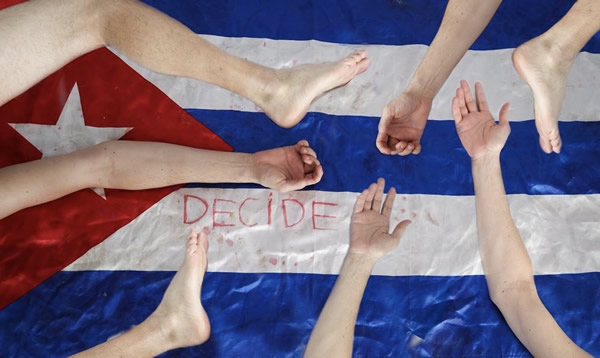
Due to his work and political activism for a truly democratic Cuba, Nonardo suffered police harassment and Cuban state security agents threatened him with jail. Fearing for his life, he took refuge in Spain, a country where he feels he has been reform and from which he speaks with the Washington Blade.
WASHINGTON BLADE: Those who follow your art on social networks and off of them know you as Nonardo, but few know that your real name is Michel. How and why was Nonardo Perea born?
NONARDO PEREA: I remember starting my writing career and I needed another name that was not so common. I did a big search and I didn’t like any of them. I wanted a unique name if possible. One afternoon I was sitting in the living room of my house with my father and I told him about the need for a name. It was he who proposed Nonardo. At first it sounded a bit ugly to me, but then with Perea it seemed a little better. It had strength. I liked it because it began with “no”, denial, and was followed by “nardo”, flower, that is, Nonardo had a lot to do with me. Since then I started using it for all of my work, both literary and audiovisual.
BLADE: How does your artistic training take into account that you are an empirical creator?
PEREA: My artistic creation from the beginning was always very complicated, taking into account that I had to abandon my studies at an early age for inclusion reasons, so I have no academic training; then add to that that I am a very obvious gay. At one point in my teens I was seen as a person who was too feminine. The fact of looking like a woman was a problem when trying to fit in a macho and homophobic society. Where I first tried to break through was in writing. I started by attending literary workshops, where I won several contests quite quickly. I was never exempt from criticism and rejection of the themes that my narrations addressed, which almost always focused on LGBTQ issues and dirty realism. Many times I felt that being the way I am made many uncomfortable. But despite the rejections and bad times that I lived in various periods of my life, I continued doing narrative, and I also began to write articles about social issues for the Havana Times digital newspaper. Then, over time, I had the opportunity to apply to a video journalism workshop in Prague organized by the People in Need organization, and thanks to a woman I love very much, Clara González, who saw some potential in me, I was accepted to participate in the course, in which I learned some video editing, and received help with equipment that helped me to start doing audiovisual work with better quality. All my creative works have been done empirically, and above all I am an artist who works based on improvisation.
BLADE: You have ventured into artistic genres as different as writing, journalism and acting. How do you define yourself as an artist and why?
PEREA: I am a person who cannot be inactive. I spend every day of my life thinking about doing something new. Sometimes I have so many things on my mind, and the fact that I can’t do everything I want to do makes me feel a bit frustrated. I have no words to define myself, I can only say that in some way my creative processes have helped me to cope with the life that I had to live, everything I have done and do has served as a way of escape from reality and everyday life, I could no longer live without creating.
BLADE: In a recent interview you precisely declared that your art was a process of liberating yourself. What exactly do you free yourself from when you create?
PEREA: I free myself from the day-to-day, the everyday, my fears and censorship.
BLADE: In most of your visual works you work with your own image. Why?
PEREA: I use myself as an artistic object because in Cuba I lived in solitude for a long time. I somehow isolated myself and created a space of comfort in my home, a place where I felt more free. The confinement somehow helped me to stay away from society that did not tire of making me feel bad about my obvious homosexual condition in much of my youth. My literary proposals and art in general, on the other hand, were not taken into account. I always perceived that most people underestimated me, and proposing someone to collaborate with me on erotic photographs without receiving anything in return was complicated, and still is. I have control over my body. If I want to undress in a photo or in a video, even if I feel sorry, I strip myself of complexes and do it. If I want to take a photograph that is too vulgar, I also do it. I do not have to request permission from anyone to do so. I don’t put up barriers. I take a risk, then I think that they say what they want. I understand that I am doing a job where I express my personal and social problems, as a human being.
BLADE: You identify yourself as an androgynous person. How many difficulties has that brought you considering that you have lived most of your life and developed your work in Cuba, a country where macho and homophobic ideals still predominate?
PEREA: I consider myself a non-binary androgynous person, because I do not identify with any sex. I can feel at ease as a girl as well as a boy. I have no problem with male or female pronouns. I do not like to victimize myself, but I can tell you that the road has been very difficult, and it has been not only for me, but for many other gays and lesbians who have chosen not to hide their sexual identity in their lives and have had to fight against the world. Being who I am in Cuba has not helped me much in terms of being able to be recognized for my work, but being who I am has helped me to strengthen myself and to understand that I do not need the approval of any institution to continue creating. I am a Cuban artist and like it or not, a large part of my work was created in Cuba.
BLADE: Many Cuban artists prefer to separate their creations from politics and even refuse to give their true judgment on the situation on the island. However, your work has a high dose of activism against the dictatorship and in defense of LGBTQ rights. What consequences, professional and personal, has being an artist labeled by the Cuban regime as “counterrevolutionary” brought you?
PEREA: The main consequence is that I had to go into exile; leave the country where I was born, abandon my mother and family, my friends, my dogs and a lifetime. But I think it had to be that way. There was no other way than to say goodbye, because under no circumstances was I going to allow my creative processes to stop, and above all I was going to continue doing my activism. I know that perhaps I was not going to be able to withstand so much pressure from state security agents, who wanted me to collaborate with them to expose my colleagues from the San Isidro Movement. If I returned to Cuba right now, I don’t know what my life would have been like from that moment on. If being a counterrevolutionary means saying what I think, and being in favor of oppressed minorities, and being against a dictatorship that has left Cuba and its people in a nameless misery for 61 years, then I am a counterrevolutionary and with great honor. I have nothing for which to thank that country, where I was always seen as a freak, and what little I got was thanks to my effort and dedication, because while in Cuba I received criticism and obstacles for everything, for this reason they are collecting what they sowed with me, they do not expect roses from me.
BLADE: In Cuba, to be accepted as part of the official LGBTQ movement you have to share the ideology of the dictatorship, the same one that put equal marriage to a popular vote and represses independent activists. In your opinion, what are the dangers of “politicizing” the struggle of the Cuban gay movement?
PEREA: The danger is in seeing how it becomes politicized. While in Cuba, I never stopped going to the marches staged by CENESEX (the National Center for Sexual Education) and I will not forget how Mariela Castro (CENESEX’s director and the daughter of former Cuban President Raúl Castro) herself politicized those mini-carnival marches with slogans in favor of the five spies imprisoned in the Empire (a reference to the U.S.), and with cries of “socialism yes and homophobia no.” I do not remember seeing any gay or lesbian carrying a sign demanding equal marriage, or demanding freedoms, or a law against gender violence. It is really pathetic considering that the system itself is the number one cause of the persistence of homophobia and constant abuse of people from the community, mainly transgender people, in Cuba, a country where your rights are constantly violated, either because of race or sexual orientation. Those marches were politicized by CENESEX itself in favor of a supposed socialism, which has never worked and will never work because that is a hybrid between communism and underdeveloped capitalism, and we all know that it is nothing other than a dictatorship, and of the crudest in history because it has managed to last for 61 years. If Mariela Castro and all her loyal followers politicize the march for their benefit, I don’t see why the community cannot independently arm its own fight in favor of the most basic rights of the LGBTQ community in Cuba.
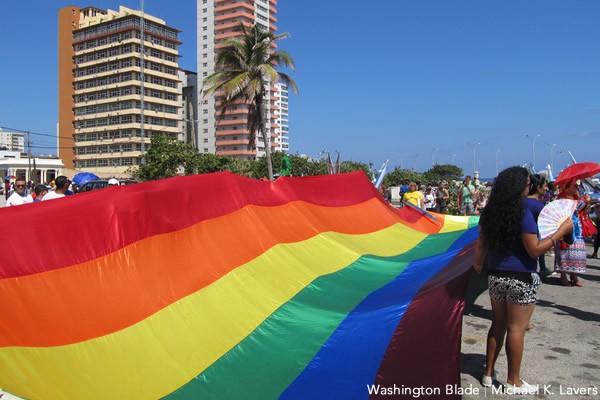
BLADE: In what way has the forced exile that you have faced in Spain changed your work?
PEREA: Right now I continue to do what I want to do, regardless of being in Spain. I still feel that I am in Cuba. My vision as an artist has not changed much. I’ve only been here a year and seven months, although I believe that wherever I am, in some way my work will be linked to that of the island because I have not yet cut that umbilical cord that links me to the place where I was born and took my first steps. It is true that one acquires other mechanisms of creation and invoicing in the work while abroad, but at the moment I do not think that the focus of my work has changed much because of being in another country. Of course, here in Europe there are other problems that I may be able to take advantage of, but be that as it may, they will be appreciated from the perspective of an exiled Latin American artist.
BLADE: On a personal level, what has it been like to be a gay immigrant in Europe?
PEREA: I am very grateful for Spain, mainly for Madrid, which is the place where I have lived since I arrived in 2019. At the moment, I have not felt discriminated against because of my sexual orientation or because I am a foreigner. I have received emotional and legal support from the NGO Rescate, which welcomed me and where I have received the care that I never had in my own country. With all the social and political problems that may exist, it is in this country where I have somehow been able to know what true freedom is.
BLADE: What can we expect from Nonardo Perea in the near future?
PEREA: I am in another difficult moment in my life right now, because I cannot find a job, and I do not receive any money for my artistic work, so what I do is for the love of art and because I cannot stop building my own world. The COVID situation has managed to make things more difficult, not only for me but for everyone, but taking into account that I am an exile and that I have been here for a short time, it is very complicated. Even so, I eventually continue to make video art for the Vulgarmente Clásica audiovisual project, which I have been doing for several years. And more recently I started with a new project, “Maricón Tropical: Living in Madrid”, this one is a bit more comprehensive not to call it ambitious because I insert various artistic manifestations: Performance, audiovisual, literature, drawing and photography, and it is focused on my new life as an exile in Madrid, everything seen from a self-referential point of view, as are almost all my proposals.
BLADE: If you had to create a work that describes your life right now, what would it be like?
PEREA: I consider that my life, my true life, has started now, what it was before was not. For the purposes I was born on March 19, 2019, when I set foot in Spain. All the past is left behind. I want to imagine that the past was a bad dream. My “Maricón Tropical: Living in Madrid” project is a work that somehow reflects that past, which is unfortunately impossible to forget and it is also good that people know what that other life was like, but I focus more on the present, my current problems as a person who faces a new life as an adult who feels like a newborn. I can only tell you that my life’s work is in progress.
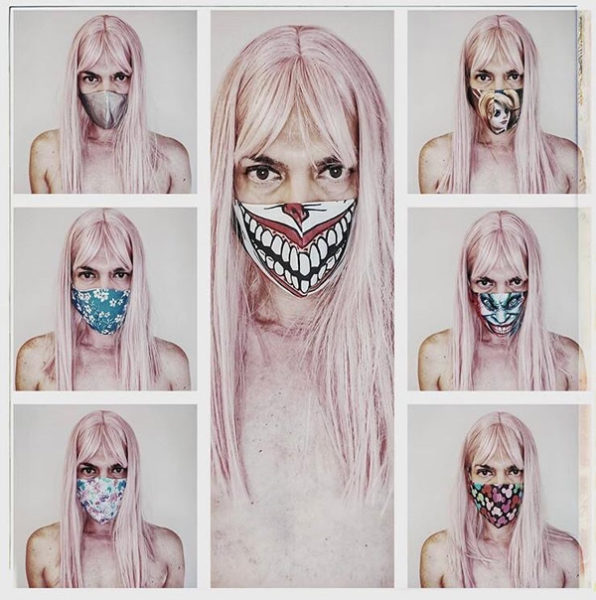
Books
‘Dogs of Venice’ looks at love lost and rediscovered
A solo holiday trip to Italy takes unexpected turn
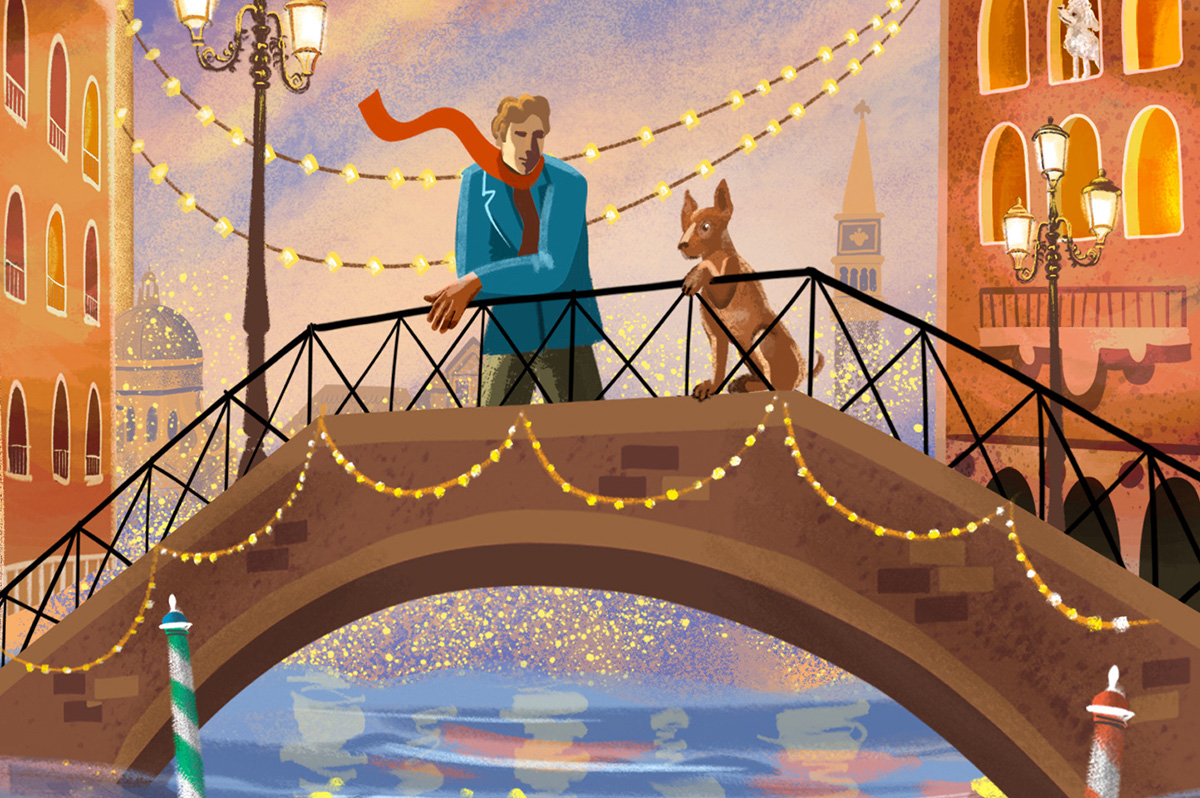
‘The Dogs of Venice’
By Steven Crowley
c.2025, G.P. Putnam & Sons
$20/65 pages
One person.
Two, 12, 20, you can still feel alone in a crowded room if it’s a place you don’t want to be. People say, though, that that’s no way to do the holidays; you’re supposed to Make Merry, even when your heart’s not in it. You’re supposed to feel happy, no matter what – even when, as in “The Dogs of Venice” by Steven Rowley, the Christmas tinsel seems tarnished.

Right up until the plane door closed, Paul held hope that Darren would decide to come on the vacation they’d planned for and saved for, for months.
Alas, Darren was a no-show, which was not really a surprise. Three weeks before the departure, he’d announced that their marriage wasn’t working for him anymore, and that he wanted a divorce. Paul had said he was going on the vacation anyhow. Why waste a perfectly good flight, or an already-booked B&B? He was going to Venice.
Darren just rolled his eyes.
Was that a metaphor for their entire marriage? Darren had always accused Paul of wanting too much. He indicated now that he felt stifled. Still, Darren’s unhappiness hit Paul broadside and so there was Paul, alone in a romantic Italian city, fighting with an espresso machine in a loft owned by someone who looked like a frozen-food spokeswoman.
He couldn’t speak or understand Italian very well. He didn’t know his way around, and he got lost often. But he felt anchored by a dog.
The dog – he liked to call it his dog – was a random stray, like so many others wandering around Venice unleashed, but this dog’s confidence and insouciant manner inspired Paul. If a dog could be like that, well, why couldn’t he?
He knew he wasn’t unlovable but solo holidays stunk and he hated his situation. Maybe the dog had a lesson to teach him: could you live a wonderful life without someone to watch out for, pet, and care for you?
Pick up “The Dogs of Venice,” and you might think to yourself that it won’t take long to read. At under 100 pages, you’d be right – which just gives you time to turn around and read it again. Because you’ll want to.
In the same way that you poke your tongue at a sore tooth, author Steven Rowley makes you want to remember what it’s like to be the victim of a dead romance. You can do it here safely because you simply know that Paul is too nice for it to last too long. No spoilers, though, except to say that this novel is about love – gone, resurrected, misdirected – and it unfolds in exactly the way you hope it will. All in a neat evening’s worth of reading. Perfect.
One thing to note: the Christmas setting is incidental and could just as well be any season, which means that this book is timely, no matter when you want it. So grab “The Dogs of Venice,” enjoy it twice with your book group, with your love, or read it alone.
The Blade may receive commissions from qualifying purchases made via this post.
a&e features
Local, last-minute holiday gift ideas
Celebrate the season while supporting area businesses
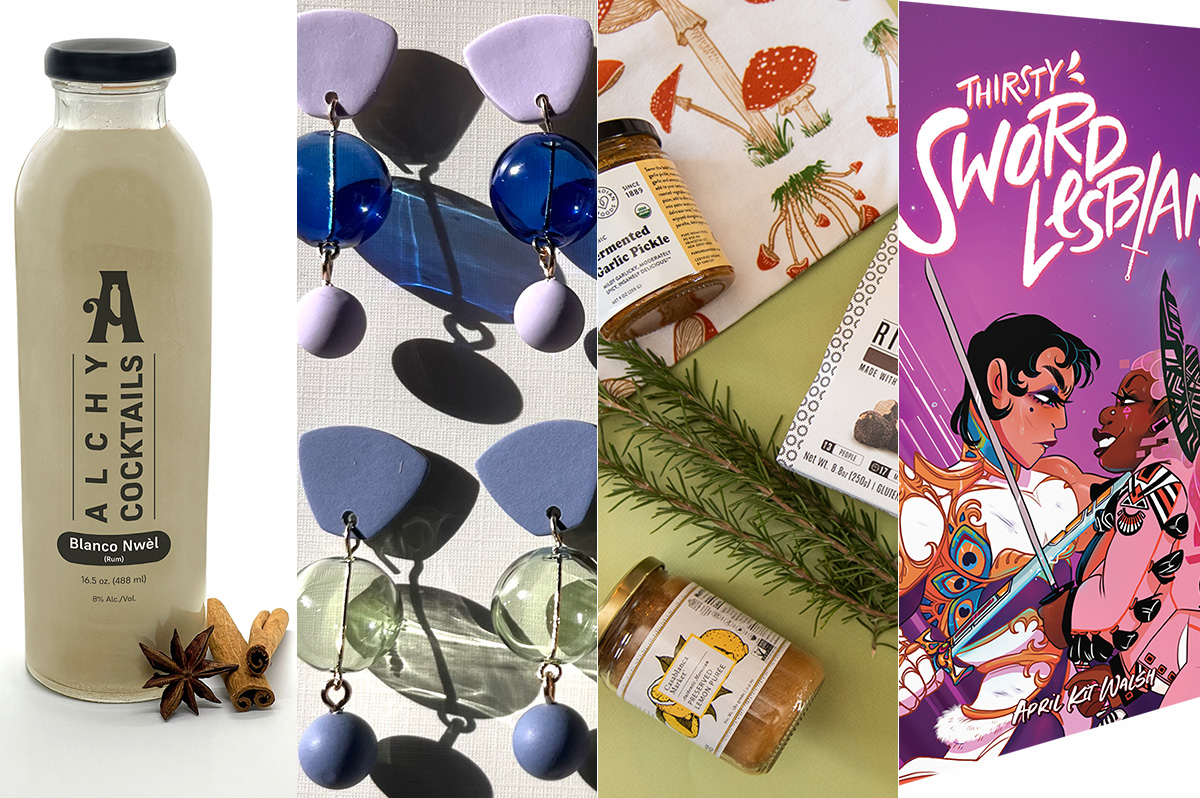
The DowntownDC Holiday Market is bustling. Union Station is decked out with its annual Christmas tree. Washingtonians have wrapped their houses and apartment balconies with festive lights and holiday decorations. The holiday season is here. And with stockings to fill and empty space under the tree, Washington’s local shops and artists have plenty to offer.
Show your LGBTQ and D.C. pride with the Washington Blade’s annual holiday gift guide.
To embrace the holiday buzz: The Blanco Nwèl cocktail from Alchy Cocktails. This Caribbean eggnog is one of Alchy Cocktail’s seasonal holiday cocktails. The flavor profile is similar to coquito, a traditional Puerto Rican Christmas drink with a coconut base. As a queer and Caribbean-owned business, Alchy Cocktails has been based out of Washington since 2021. Blanco Nwèl is available in both cocktail ($24) and mocktail ($12) online and at a variety of holiday markets, including the Tingey Plaza Holiday Market, the Flea Market at Eastern Market, Union Station’s Main Hall Holiday Market, and more. ($24)
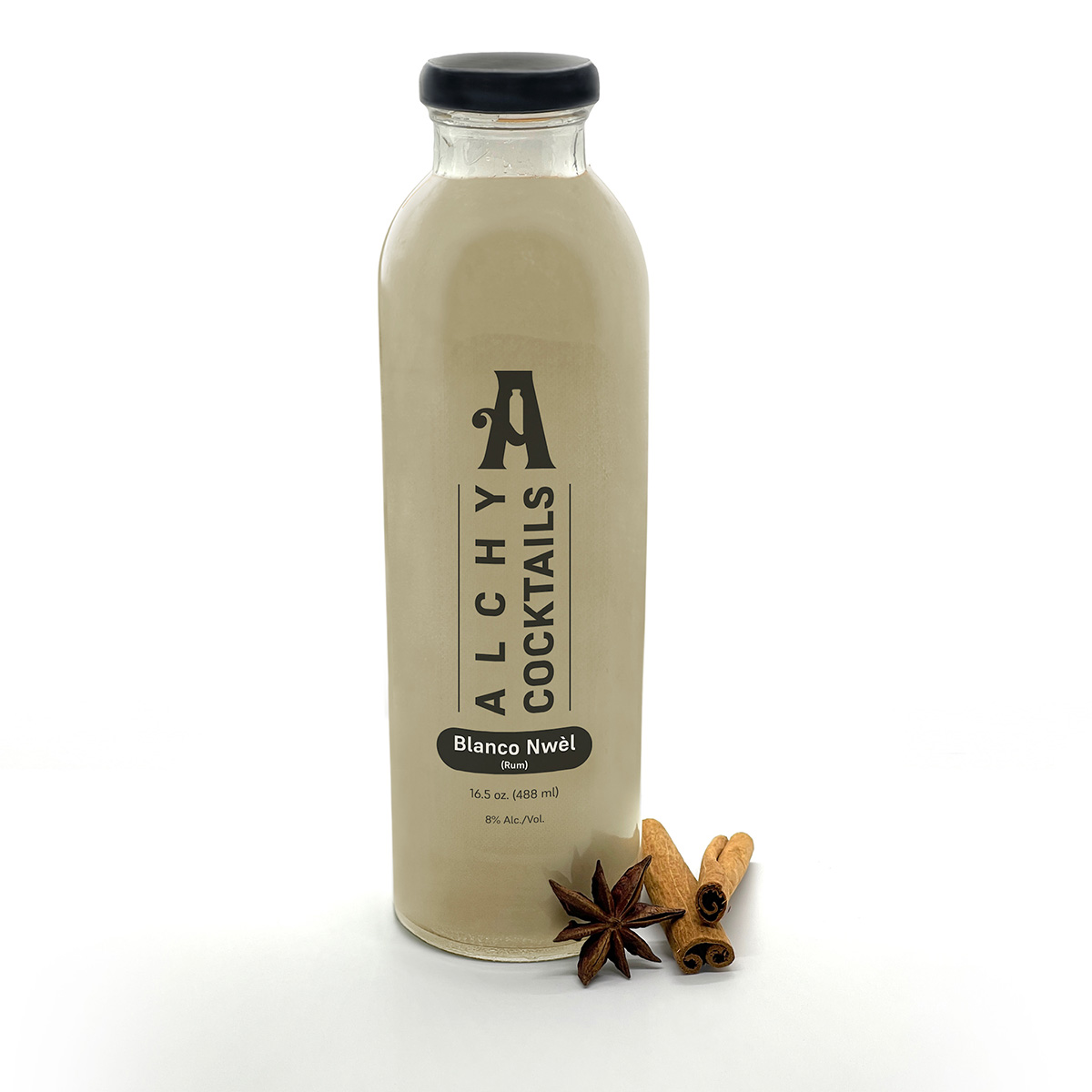
A spicy bite: Gordy’s Cajun Okra from Salt and Sundry. These spicy, tangy pickles pull on Southern Cajun-style flavors, packing a punch with paprika, cayenne, and more. Gordy’s is an LGBTQ-owned and Washington-based brand, making this gift an opportunity to support a local LGBTQ business straight from the jar. This pantry staple is available on Salt & Sundry’s website and at its locations in Union Market, Logan Circle, and its Georgetown holiday pop-up store. ($14)
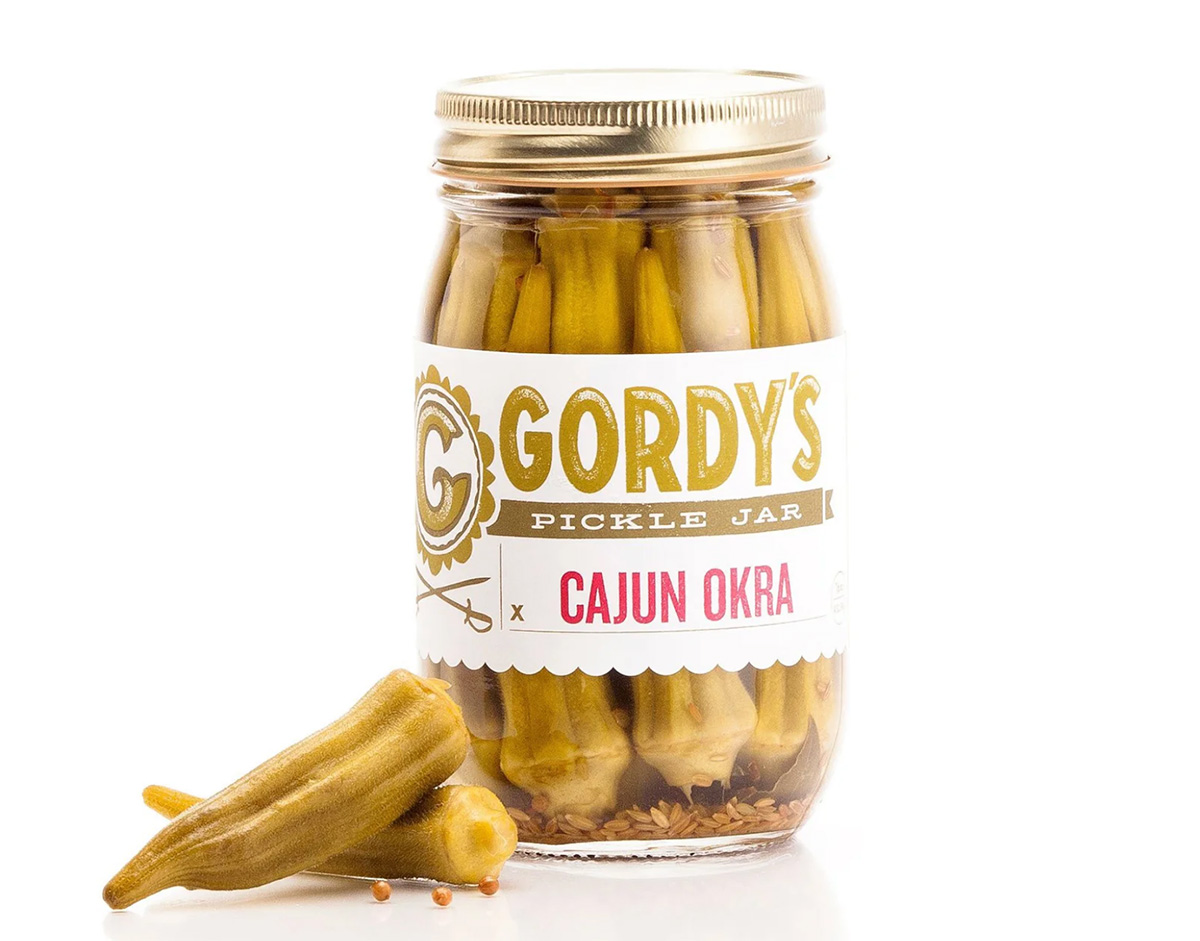

To celebrate Washington pride: The DC Landmark Tote Bag from The Neighborgoods. Native Washingtonians, visitors, friends and family alike will find something to love about this Washington-themed tote bag. Food trucks, the 9:30 Club, the Metro logo and pandas from the National Zoo are just some of the city’s landmarks depicted across the tote in a red, white, and blue color palette. The tote is a part of the DC Landmarks collection, which donates 10 percent of its sales to the American Civil Liberties Union. The Neighborgoods itself is a local, woman-owned business built out of a passion for screen-printing in 2013. The 100 percent cotton canvas tote is for sale online or at the DowntownDC Holiday Market. ($22)
To give friends and family their flowers: The Flowers Bandana from All Very Goods. This 100 percent cotton bandana was designed in Washington and hand printed in India. Its uniqueness comes in being covered with the faces of Black women, representing a “love letter to all women but especially Black women,” according to All Very Goods. The Black woman-owned and operated business, based out of Northwest Washington, has a mission to celebrate diversity and representation through its products. The bandana intends to give Black women their “flowers.” The Flowers bandana is available for purchase online. ($24)
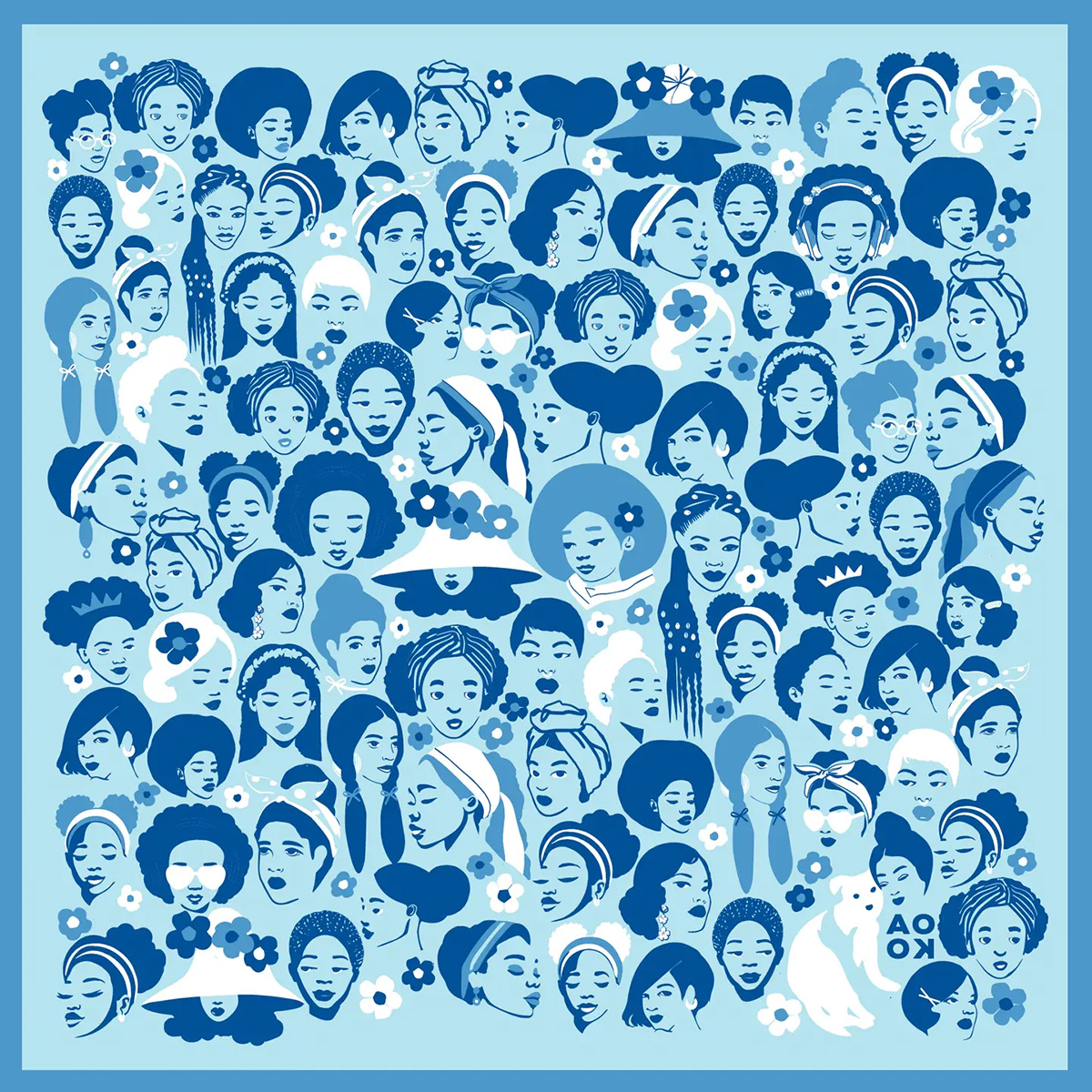
To unlock culinary creativity: The Curious Chef Gift Collection from Each Peach Market. This customizable collection of kitchen oddities — ranging from tinned fish to chili oil — is a quirky gift for the most inventive chefs. The collection is available in a Standard Santa, Extra Goodies and Super Holiday Size for up to $165. The Washington-based market, founded in 2013, permits customers to make the collection special by specifying what unique ingredients are packaged, including products made by local or LGBTQ brands. Each Peach Market offers assembly and pick up in-person at its Mount Pleasant shop and also offers local delivery and nationwide shipping via its website. ($85)

To give a touch of sweetness: The DC Landmark Chocolate Covered Oreo Holiday Cookies from Capital Candy Jar. Wrapped in a festive red bow, this box of nine cookies embraces love for Washington and the holiday season in one. Among the dark and milk chocolate covered cookies are images of the U.S. Capitol, the White House, the Lincoln Memorial, the Jefferson Memorial and festive hollies. The treat, packaged in a Hill East facility just a few blocks from the Capitol, is available for purchase online and at the DowntownDC Holiday Market. ($23.95)

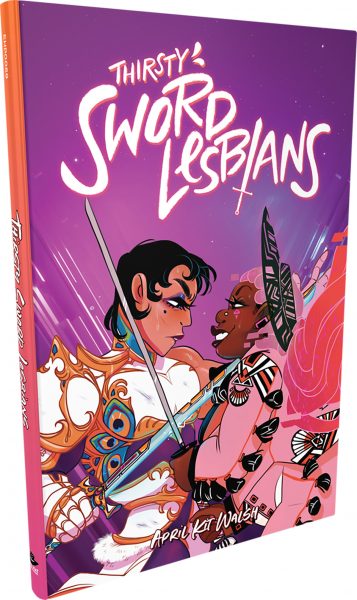
To celebrate queer gaming: Thirsty Sword Lesbians from Labyrinth Games & Puzzles. This roleplaying game embraces lesbian culture by unlocking a world of swords, romance, and battle. Ideal for group settings, the book presents a system of world building and character identities that are best brought to life by creative minds. Labyrinth, which has been a local Washington business for more than 15 years, celebrates non-digital fun through games and puzzles that connect the community. This gift is offered online and at Labyrinth’s Capitol Hill location. ($29.99)
To make a bold statement: The “Resist” T-shirt from Propper Topper. This locally screen-printed black tee features the Washington flag designed within a raised fist, symbolizing both Washington pride, and political resistance. The shirt is made exclusively by Propper Topper, a local Washington business that evolved from a hat shop to a gift store since opening in 1990. The tri-blend unisex shirt is available both for pickup at Propper Topper’s Cathedral Heights location and shipping via the online site. ($32)
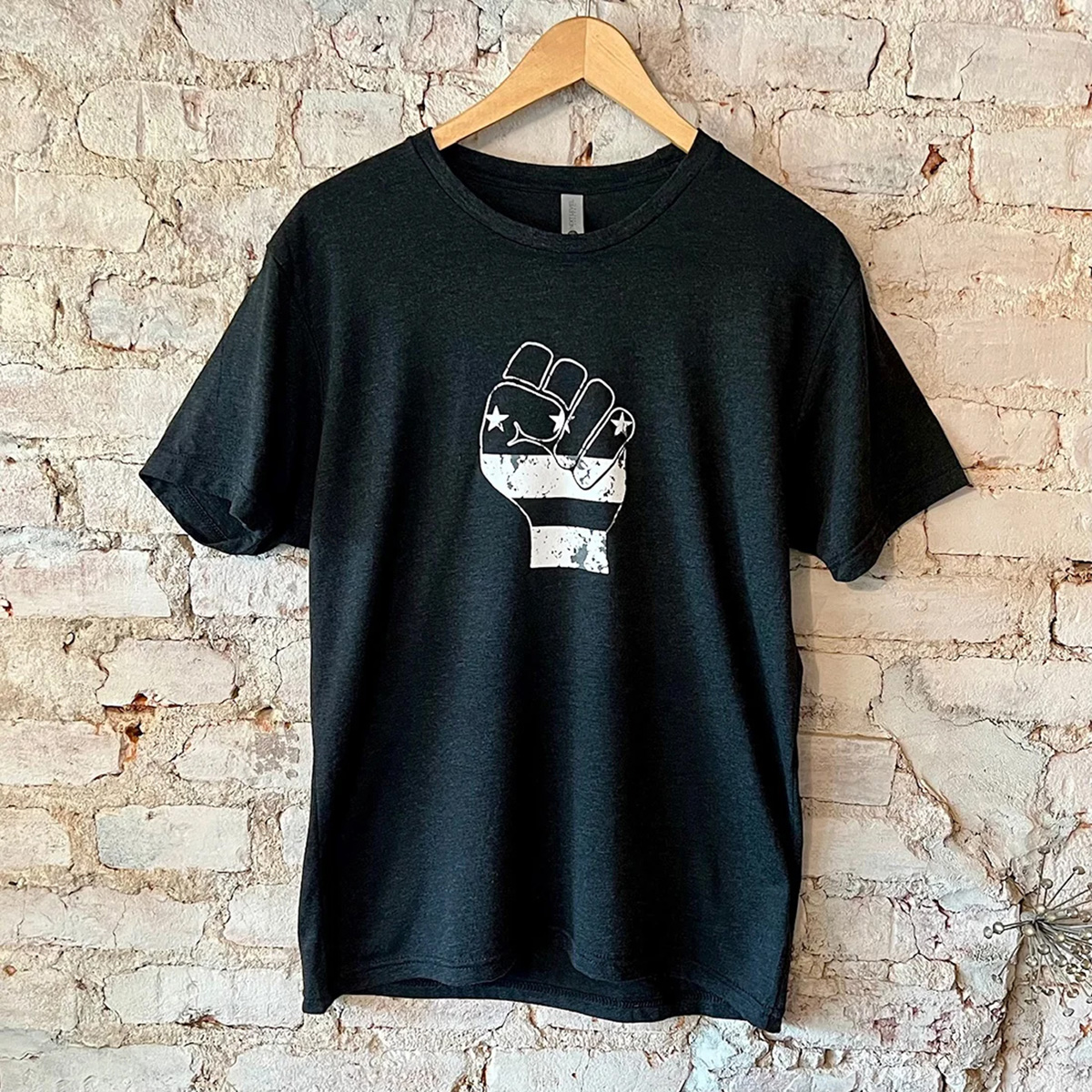
To keep it c(g)lassy: The Glass Ball earrings from Blue Moon Aquarius. Gifting can rarely go wrong when it comes to a new pair of earrings. The unique statement earrings — made of polymer clay, glass, and 18k gold plating over surgical steel — are hand cut, sanded and assembled in Washington, meaning each set is unique. Blue Moon Aquarius, a local brand, is known for its small batch jewelry and home decor designed with clay materials. Available in oxblood, hunter green, lavender, and bluestone color palettes, these earrings are available for purchase on Blue Moon Aquarius’ website and at the DowntownDC Holiday Market. ($48)
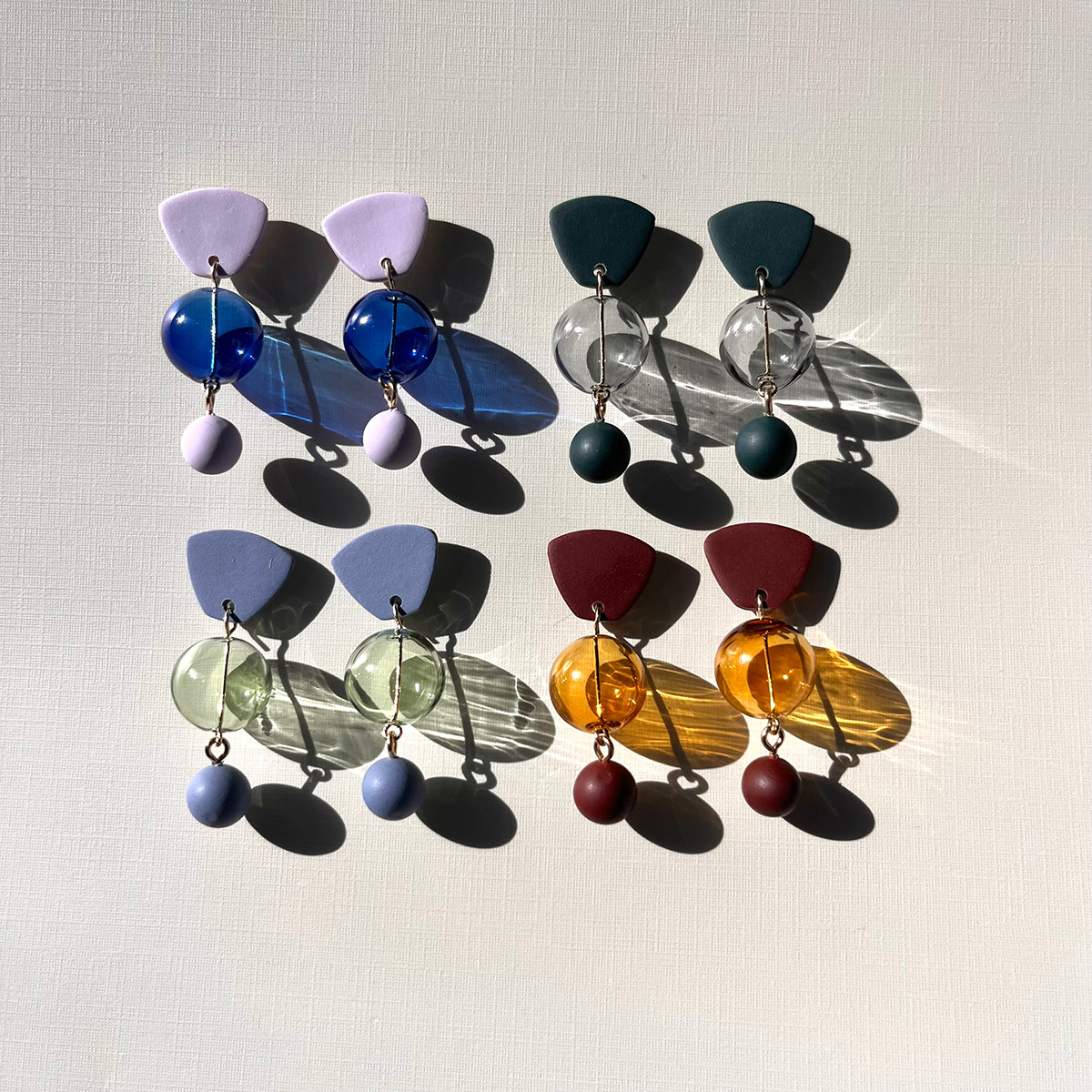
To elevate a holiday tea or charcuterie party: The Honey Flight: Tea Lover’s Selection from BannerBee. This local honey company presents the ideal gift to make cozying up with a cup of tea slightly more special. The Honey Flight contains three types of raw wildflower honey infused with fair trade Ugandan vanilla bean, chai spices, and locally sourced lemon thyme herb. The gift is also an opportunity to uplift a family company based in the Mid-Atlantic that offers all-natural, sustainable products. The flight is available online, at the DowntownDC Holiday Market or at the Arlington Courthouse and Dupont Farmers’ Markets. ($36)
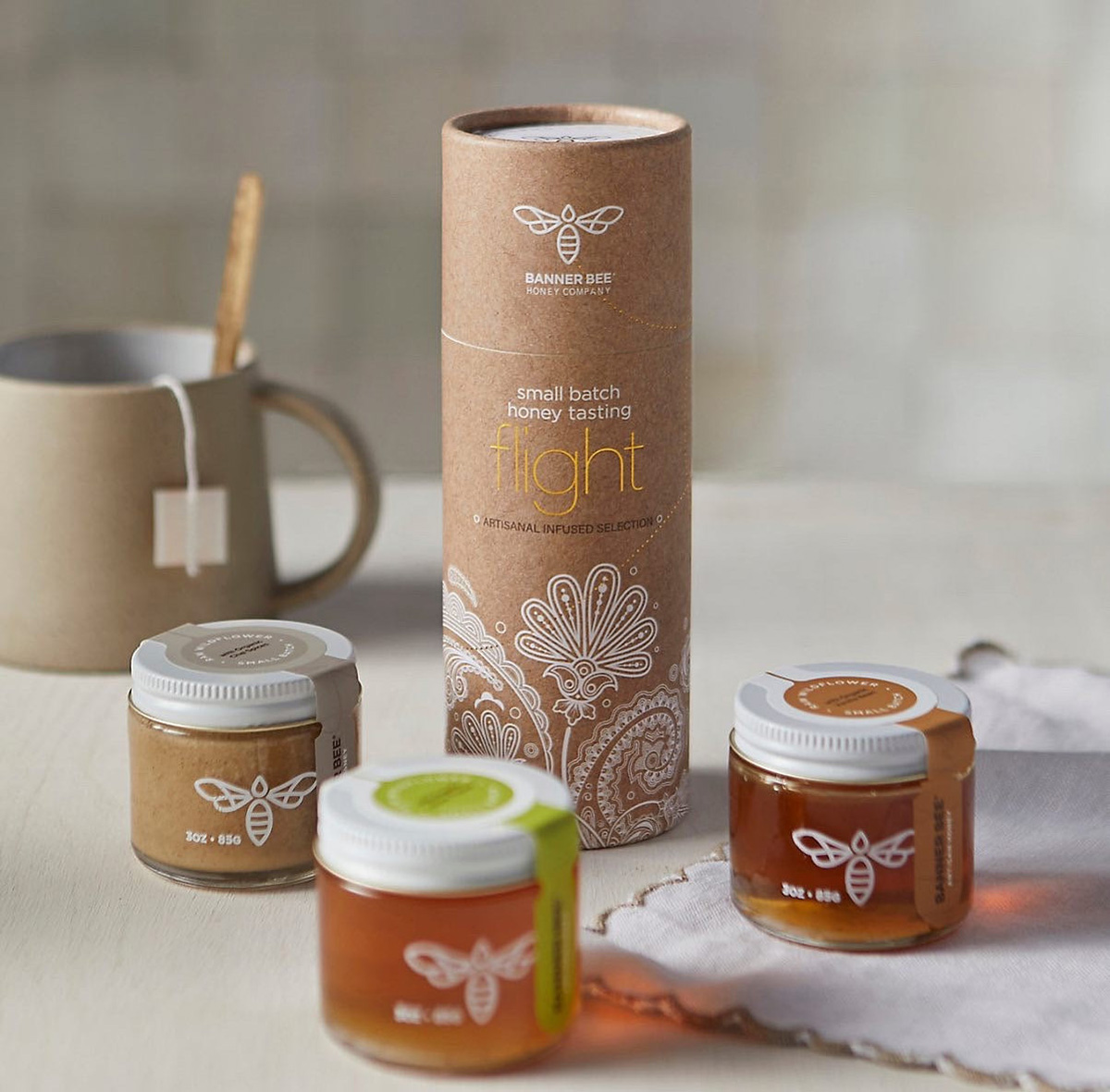
For Baltimore shoppers: If you’re in Charm City, don’t miss Balston Mercantile, opened by a gay couple in June. Their gorgeous shop in the Hampden neighborhood offers an array of unique, upscale finds, from barware and artwork to cookbooks and home decor and more. (849 W. 36th St.)
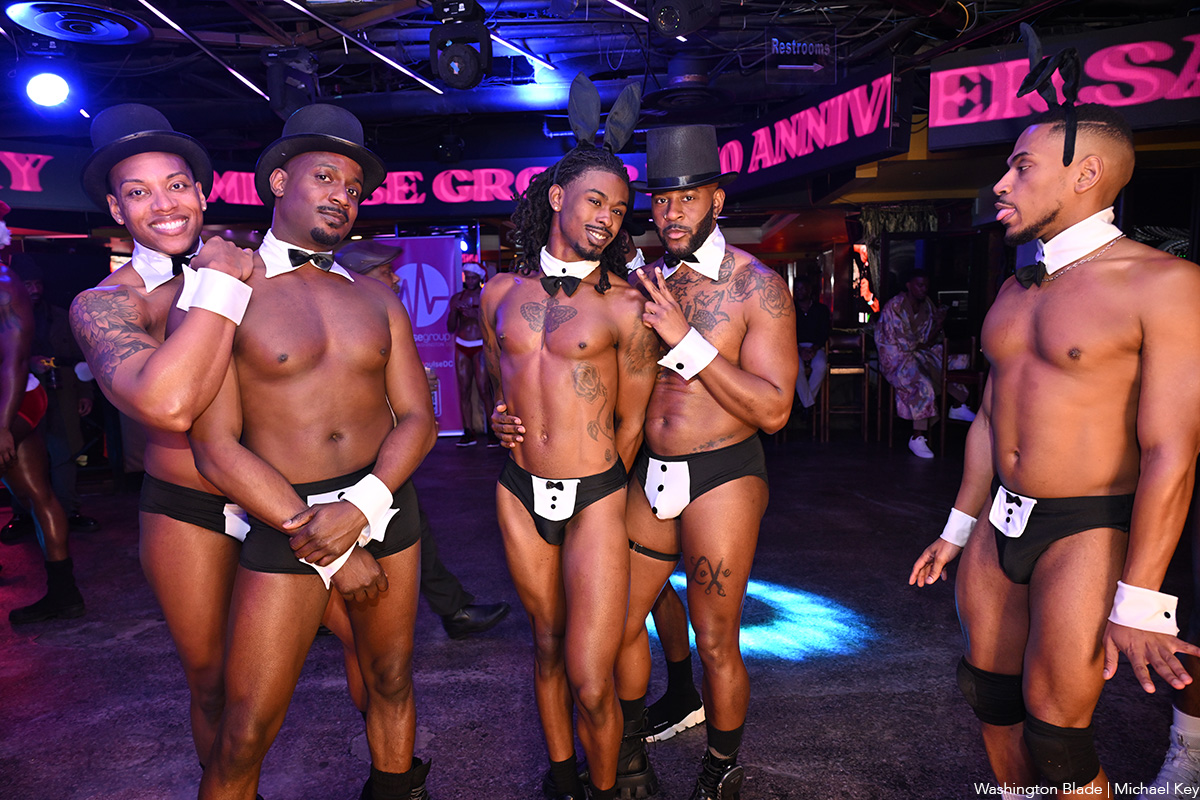
Impulse Group DC held “10’s Across the Board: A Celebration of 10 Years” at Bravo Bravo (1001 Connecticut Ave., N.W.) on Sunday, Dec. 14. Impulse Group DC is a volunteer-led 501(c)(3) and affinity group of AIDS Healthcare Foundation dedicated “to engaging, supporting, and connecting gay men” through culturally relevant health and advocacy work.
(Washington Blade photos by Michael Key)
